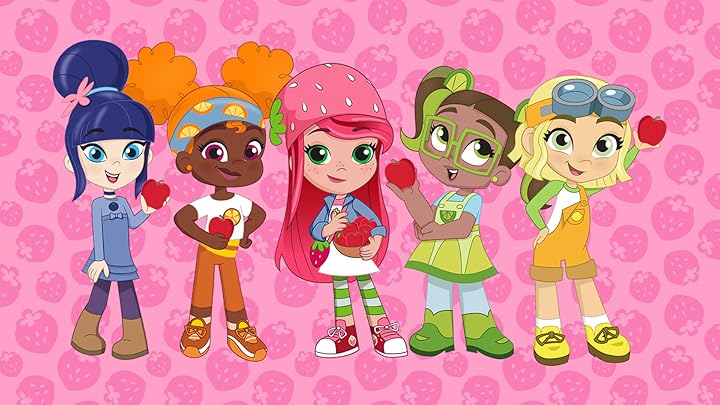Little Debbie has been a household name in the world of snack foods since its inception in 1960. Among its myriad of offerings, the strawberry snacks, particularly the Strawberry Shortcake Rolls and Strawberry Crème Pie, have garnered significant attention and praise. But how exactly are these beloved treats made? This article delves into the fascinating process behind Little Debbie strawberry snacks, from sourcing ingredients to packaging the final product.
The Origins of Little Debbie
Before diving into the manufacturing process, it’s essential to understand the roots of Little Debbie. The brand was created by O.D. McKee and his wife Ruth in Collegedale, Tennessee. Named after their granddaughter, Debbie, Little Debbie became synonymous with affordability and quality in snack foods.
Ingredients: The Foundation of Flavor

The first step in the creation of Little Debbie strawberry snacks is sourcing high-quality ingredients. The key components include:
- Strawberries: Whether fresh or freeze-dried, strawberries are a crucial element. They are sourced from various farms, with a focus on sustainability and quality.
- Flour: The flour used in the cakes is typically a blend of wheat varieties, ensuring the perfect texture.
- Sugars: Both granulated sugar and high fructose corn syrup are used to sweeten the snacks.
- Fats: Vegetable oils and shortening help achieve the desired moisture levels and texture.
- Preservatives: To maintain freshness and shelf life, various preservatives are employed, though Little Debbie aims for minimal use.
The Manufacturing Process

The production of Little Debbie strawberry snacks is a well-oiled machine, employing advanced technology and stringent quality control measures. The process can be broken down into several key stages:
1. Mixing and Batter Preparation
The first stage involves mixing the dry and wet ingredients to create a batter. This is done in large industrial mixers, where precision is crucial. The mixing process typically includes:
- Combining flour, sugars, and leavening agents.
- Incorporating wet ingredients like eggs, milk, and oils.
- Blending until the batter reaches a smooth consistency.
2. Baking
Once the batter is ready, it is poured into baking pans and placed in large ovens. The baking process is meticulously monitored to ensure that each batch is perfectly cooked. Key factors include:
- Temperature: The ovens are preheated to specific temperatures to achieve the desired rise and color.
- Time: Each batch has a defined baking time to ensure optimal texture.
3. Cooling
After baking, the cakes must cool down to prevent sogginess. This is typically done on cooling racks where air circulates around the cakes, allowing them to reach room temperature before further processing.
4. Filling and Assembly

The iconic filling is what sets Little Debbie strawberry snacks apart. Once cooled, the cakes are filled with a creamy strawberry filling. This stage includes:
- Using automated machinery to inject the filling evenly.
- Ensuring the right ratio of cake to filling for optimal taste.
5. Icing and Decoration

After the filling, the cakes are iced or coated with a sugary glaze. This final touch not only enhances flavor but also adds to the visual appeal. Key points in this stage include:
- Using a smooth, even layer of icing to ensure consistency.
- Incorporating decorative elements like sprinkles or fruit pieces for added flair.
6. Packaging
Once the snacks are fully assembled, they are packaged for distribution. This stage is crucial for maintaining freshness and ensuring that the snacks reach consumers in perfect condition. The packaging process involves:
- Using airtight wrappers to seal in freshness.
- Labeling with nutritional information and expiration dates.
- Employing automated machines for efficiency and speed.
Quality Control: Ensuring Consistency
Quality control is of utmost importance at the Little Debbie manufacturing facilities. Each step of the production process is monitored to ensure that the final product meets the brand’s high standards. This includes:
- Regular testing of raw ingredients for quality and safety.
- In-process inspections during mixing, baking, and filling.
- Final product testing for taste, texture, and appearance.
Environmental Considerations
As consumers become increasingly aware of environmental issues, Little Debbie has also taken steps to reduce its carbon footprint. Some of these initiatives include:
- Implementing energy-efficient practices in manufacturing facilities.
- Reducing waste through recycling and reusing materials.
- Sourcing ingredients from sustainable farms.
Consumer Engagement and Feedback

Little Debbie values its consumers’ opinions and often engages with them through social media and surveys. This feedback loop not only helps in improving existing products but also aids in the development of new flavors and snacks. Recent trends show that consumers are leaning towards healthier options, prompting Little Debbie to explore potential reformulations.
Case Study: The Popularity of Strawberry Snacks

The success of Little Debbie strawberry snacks can be attributed to various factors, including effective marketing strategies and consistent product quality. A notable case is the launch of the Strawberry Shortcake Rolls, which saw a 25% increase in sales within the first year due to targeted advertising and seasonal promotions.
Conclusion: The Sweet Journey of Little Debbie Strawberry Snacks
From sourcing quality ingredients to the intricate manufacturing process, every step in the creation of Little Debbie strawberry snacks is designed to deliver a delightful experience for consumers. With a commitment to quality, sustainability, and consumer engagement, Little Debbie continues to be a leader in the snack food industry.
As consumers, understanding the journey of our favorite snacks can deepen our appreciation for them. Little Debbie’s dedication to quality and innovation ensures that strawberry snacks will remain a cherished choice for years to come. Whether enjoying a Strawberry Shortcake Roll on a sunny picnic or savoring a Crème Pie with a cup of coffee, these treats offer not just flavor but also a glimpse into the meticulous process that brings them to life.

